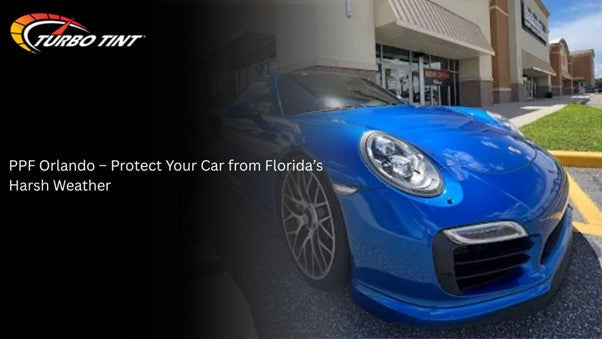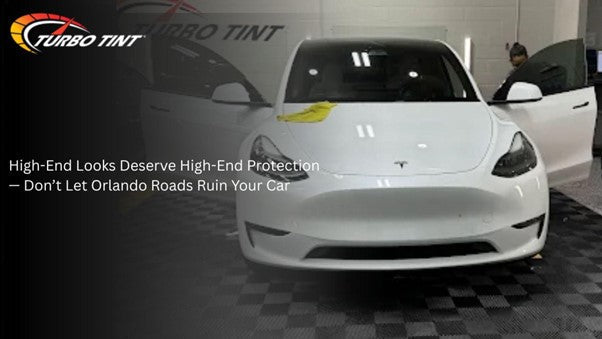How PPF and Ceramic Coating Work Differently — and Why You Might Need Both
Car protection has evolved far beyond wax and sealants. Modern owners — especially those who take pride in how their car looks and lasts — now rely on advanced technologies like Paint Protection Film (PPF) and Ceramic Coating.
What’s interesting is that these two solutions are often compared, but rarely understood in context. Many drivers choose one, assuming it covers everything, when in reality, each does a different job. And when applied correctly, they don’t compete — they complement.

Let’s go deeper into how they behave differently in real-world conditions, what makes them unique, and why combining both gives your car a kind of durability that older protection methods simply can’t match.
The Real-World Problem: Everyday Damage That’s Hard to Notice
Your car doesn’t have to be in an accident to sustain damage. Most of it happens quietly — a few grains of sand blown by the wind, acidic bird droppings left for an afternoon, or UV rays fading the top coat layer week after week.
In Florida, this is especially true. Orlando’s combination of intense sunlight, humidity, and road grit accelerates paint degradation faster than most owners realise. After a few years, you start to see dullness, oxidation, and fine scratches — even if you’ve been washing and waxing regularly.
That’s where modern protection systems like PPF and ceramic coating come in. They address different stages of this process.
Why PPF Handles What You Can’t Avoid
Even the most cautious driver can’t stop tiny impacts from happening — gravel on the highway, door dings in car parks, or insect residue that hardens on the surface.
PPF is designed for exactly this kind of abuse.
It’s a transparent urethane film that physically absorbs impact before it reaches the paint. When applied correctly, it becomes part of the car’s exterior — flexible enough to self-heal light scratches, yet tough enough to resist chips.
Where it truly proves its worth is in high-contact areas like the front bumper, bonnet, side mirrors, and lower doors. These are the zones that take most of the hits during highway driving.
The benefit is long-term consistency: five years later, the front of your car still looks new because the film took the wear, not your paint.
Why Ceramic Coating Protects What You Can Control
Ceramic coating is a different story. It doesn’t stop impact, but it dramatically reduces environmental wear and cleaning effort.
Once cured, ceramic coating chemically bonds to your clear coat (or to the PPF itself), forming a microscopic hydrophobic layer. This layer makes water, mud, and grime slide off instantly, reducing how often you need to wash the car.
Over time, it keeps the surface smoother and more resistant to oxidation, UV fading, and chemical stains. That’s why owners who invest in ceramic coating often say their car “always looks freshly detailed.”
It’s less about protection from rocks — and more about keeping your car looking factory-fresh for years.
The Hidden Advantage of Combining Both
This is where most people get it wrong. They assume PPF and ceramic coating do the same job, so choosing one is enough. But when you layer them together, something interesting happens.
PPF gives you physical defense, and ceramic coating gives you surface preservation.When coating is applied over the film, it seals the surface, keeps the film cleaner, prevents yellowing, and adds that high-gloss finish that’s hard to achieve otherwise.
The result is not just “double protection” — it’s optimized protection. You reduce the frequency of maintenance, keep the film clearer for longer, and extend the life of both the coating and the paint beneath.
It’s like protecting your car with both armour and polish — one deflects the hits, the other ensures the shine never fades.
What Drivers Often Notice After a Year
Owners who’ve used both solutions together often mention the same things:
● Less visible wear on the front end, even after long highway trips.
● Effortless cleaning — dirt doesn’t cling, and water just slides off.
● No fading or oxidation, even under strong sunlight.
● A deeper, glossier finish that holds up through seasons.
This is not marketing hype — it’s chemistry and experience at work. When you combine modern materials with expert application, your car genuinely ages slower.
Why It Matters More in Orlando
Central Florida’s environment is particularly harsh on automotive paint.
● UV exposure is stronger due to the year-round sun.
● Humidity and salt in the air promote oxidation.
● Frequent rain and sand particles create micro-abrasions.
These conditions make PPF and ceramic coating less of a luxury and more of a practical investment. Paint protecting in Orlando isn’t about vanity — it’s about preserving the value of your car against one of the most aggressive climates for paintwork in the U.S.
So, Do You Really Need Both?
If your car is new, it’s the best time to invest — prevention is always more effective (and affordable) than correction.
If it’s not new, detailers can still decontaminate, polish, and prep the surface before applying PPF and ceramic coating in layers that work together.
The goal is not to spend more — it’s to build a balanced protection system suited to how and where you drive.
Turbo Tint Orlando: Where Protection Becomes Precision
At Turbo Tint Orlando, our approach to paint protection is about precision, not packages. We don’t just install PPF and coating — we customise how they interact for each vehicle type, paint finish, and lifestyle.
Our team uses premium materials designed for Florida’s unique climate — so your car stays protected from rock chips, UV damage, and fading. Whether it’s a luxury sedan, performance car, or everyday commuter, we ensure the protection doesn’t just work — it enhances the way your car looks and feels.
If you’re serious about keeping your vehicle looking its best for years, this is where you start.
Visit Turbo Tint Orlando to know more about our PPF Orlando and Ceramic Coating Orlando services, or book your appointment today.
Your car deserves protection that’s engineered for the roads — and weather — of Orlando.




